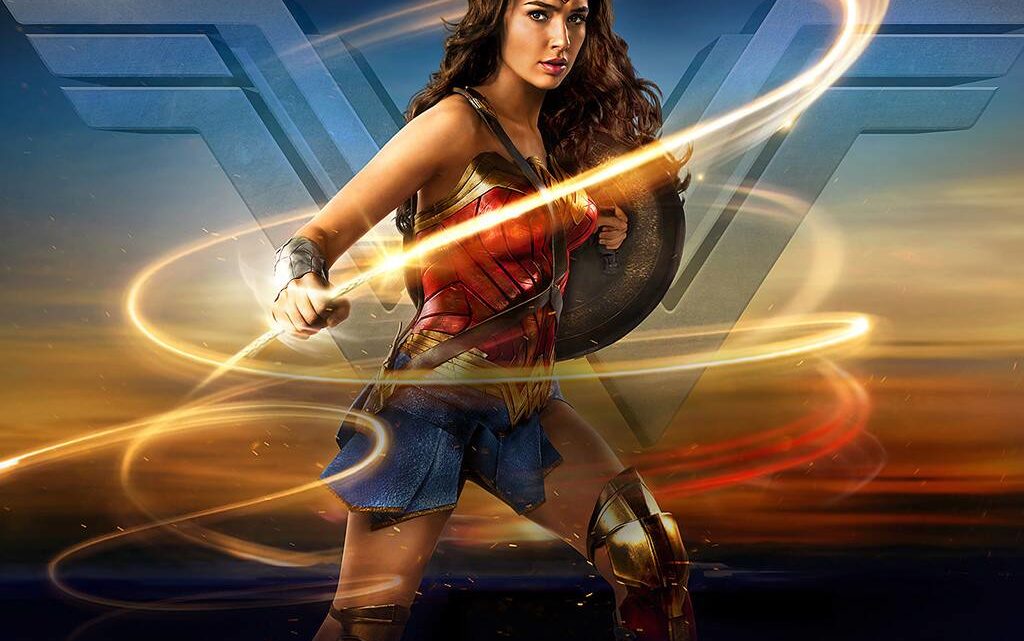Tropic Sprockets / Wonder Woman: 1984
By Ian Brockway
In the 1940s William Marston, a psychologist, saw a “great educational potential” in American comics. With his wife Elizabeth Marston, he created Wonder Woman who harnessed much of her strength not through weaponry or gadgets but through the force of love. Wonder Woman was based on Olive Byrne, a domestic partner of the Marston family. Given that male musculature (Superman and The Batman) ruled the ink of the day, a female superhero who ruled by utilizing human emotion was revolutionary.
Here is a film incarnation of Wonder Woman, subtitled “1984.” The film is a second chapter, again directed by Patty Jenkins. In its glossy glittery kitsch, it is in some ways a visual tribute to the retro TV show which featured Lynda Carter.
The film goes down easy. It may contain a great amount of visual candy but that intent is well taken for current times. The action is smooth, playful, sparkling and fun to look upon with a polished production.
After an origin story vignette we are taken to 1984 in a “Back to the Future” Robert Zemeckis cinematic tone. After rescuing a kid, Diana Prince (Gal Gadot) discovers that a citrine stone is recovered from the FBI.
Gemologist Minerva (Kristen Wiig) doesn’t know about the stone but there is a scary inscription on the object in Latin. This is not a good sign. Both of them gradually deduce that the stone has the power to grant wishes. Unwittingly, Diana wishes for the return of her doomed lover Steve Trevor (Chris Pine) while nerdy Minerva wishes to be superhumanly strong, sexually desirable and charismatic.
Enter entrepreneur Max Lord (Pedro Pascal) who makes a wish to ultimately control and influence as many people as he can.
At a party Diana meets a mysterious stranger who is long lost lover Trevor. The revolving camera angles recall films of the past, specifically Luhrmann’s “Romeo + Juliet.” Minerva sheds her shy, bookish persona and falls in love with the hyperactive and fretful Lord who is always touching his face, while Diana is in romantic rapture with Steve.
Max barges his way into The White House and mentally emasculates a Reagan-like President (Stuart Milligan).
Minerva comes along wanting more. Orwellian thoughts and vampiric machinations are in process.
Though some of it is silly, the primary concept of our universal selfishness and greed destroying us and bringing our end, remains compelling.
It is thrilling to see Gadot’s gold chrome crown against a blue sky and the bright thread of her golden lasso bringing men to their knees with a truthful comeuppance, though the real spirit of her revolutionary intent is ignored in this chapter. Women heroes fight with more ferocity than their male counterparts.
Kristin Wiig is palpably villainous in her role and she does well, giving a twist to her self- deprecating persona.
In addition, there are great touches of nostalgia and emotion. In one scene, Diana and Steve fly over the clouds as fireworks bloom in huge flowers. The panorama is musical in its joy and Jenkins is celebrating a return to the thrills of cinema here, which were largely stolen over these past long, long months.
In another, there is a street scene where hands touch hands, hugs are given and lovers kiss. Bright sun, smiles and intimacy prevail.
Jenkins’ Wonder Woman is a symbol of the cinema and of the year that will be 2021. In her gleaming red and gold suit, Diana leaps into the sky, at times tumbling like a comet or floating like an alien star. She battles against reality television demagogues and with her golden lasso points the way to moderation and empathy.
In her mirrored gold and silver, Wonder Woman is the feminine android of Fritz Lang’s “Metropolis,” one that ushers in a new year of watching films together, once again.
Write Ian at [email protected]
[livemarket market_name="KONK Life LiveMarket" limit=3 category=“” show_signup=0 show_more=0]

No Comment